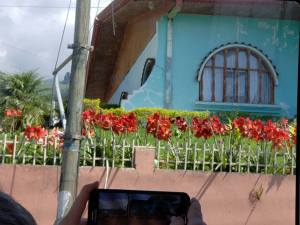Whenever we (the Garden Professors and our community) answer garden questions, we almost always will ask the location of the garden. I’m sure this frustrates some people who think that plants act the same wherever they are. However, this is not the case. There isn’t a one-size-fits-all to most garden questions.
For example, I work on the east side of Nebraska in Omaha, along the Missouri river. The environment (weather, soil, etc) here is vastly different than where I’ve spent most of my life in West Virginia. I had to re-learn how to answer questions when I moved. The soil pH is different (I’m still lamenting the fact that I can’t grow blueberries in Nebraska), the precipitation is much lower. Even now when I appear on the statewide gardening show Backyard Farmer, I have to keep in mind the location of the incoming question. The western side of the state is even drier than the eastern side, the growing season much shorter, and recommendations are vastly different.
The difference of where plants can grow and can’t is even more apparent when you travel to vastly different climates. I recently came back from a trip to the tropical paradise of Costa Rica. Many of my traveling partners and friends back home were blown away with the abundance of plants growing in yards, farms, and even in the wild that cannot grow “back home.”
The most common bedding plant in lawns were a popular holiday favorite here in the states – amaryllis. They were planted in abundance along sidewalks and driveways.

I visited a diversified coffee farm that was using Dracena (a common houseplant) as living fence posts in their vegetable garden. (And did I say coffee farm – nothing like drinking a farm fresh cup of coffee right on the farm).

Tillandsia air plants were growing like weeds (which is basically what they are) on the trunks of trees.
These are all tropical plants that won’t survive in colder or drier climates of the US. (The southern US states can grow more tropical stuff, but is is a small portion of the country.)
Many of the plants we grow both indoors and out here in the states come from different areas and grow differently in those areas than they do here. Our vegetables come from all over the world. So do our flowers and houseplants.
Plants from warmer areas either have to be grown indoors or as annuals even if they are perennial or evergreen in their native environments.
This is why the location of your garden, environment, and even the microclimate in your yard is important to know when selecting plants. Aside from the difference of what can grow, plants grow much differently in Florida than they do in Minnesota or Virginia. And why it is important information when you’re asking questions about how to grow plants or control insects and diseases – because its all about location, location, location.






